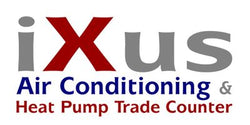Air and moisture can significantly impact the performance and lifespan of an HVACR system. Air in the system can reduce efficiency and increase energy consumption, negatively affecting indoor air quality and increasing costs. Additionally, moisture can lead to corrosion, ice formation, and damage to system components.
During installation, maintenance, or repair, HVACR systems are susceptible to contamination from debris, oils, and other foreign substances. Therefore, pulling a vacuum is a crucial step to eliminate these contaminants, ensuring the system operates with pure refrigerant and minimizing the risk of damage or system failure.
Achieving a deep vacuum of below 2 torr is essential to boil off and remove all moisture and non-condensable gases from the system. To ensure the system is ready for refrigerant, the vacuum must reach this depth. Using a vacuum gauge at the farthest point on the system is recommended, as this spot will be the last to reach below 2 torr.
Pulling a vacuum before charging a system with refrigerant ensures it is properly sealed. This process is vital for HVACR technicians to verify the proper refrigerant charge, preventing overcharging or undercharging. Both of these conditions can reduce efficiency, increase energy consumption, and potentially damage the unit.
In the HVACR industry, pulling a deep vacuum is essential for promoting system longevity and performance. With the right tools, this task becomes easy and efficient. Contact iXus today to find out more about the Fieldpiece vacuum pumps.

